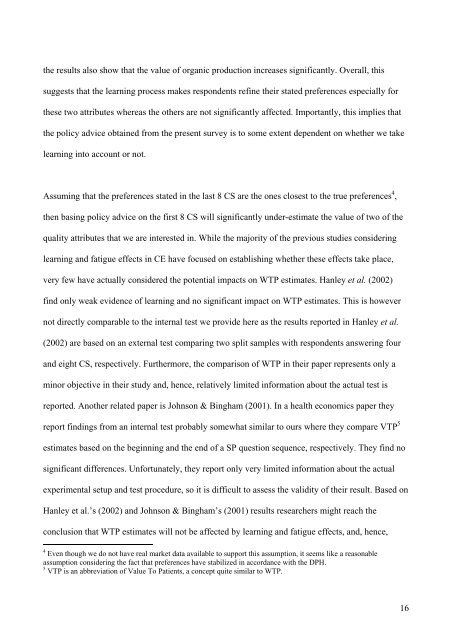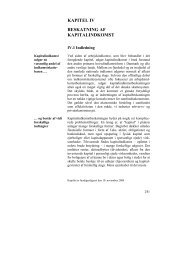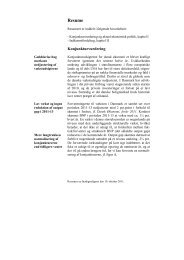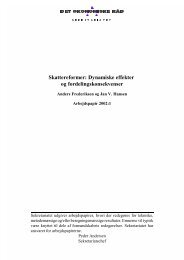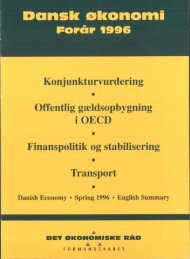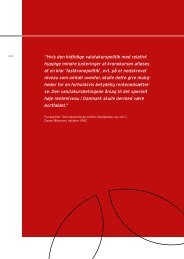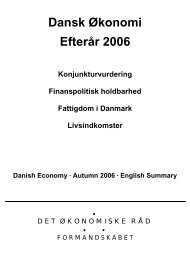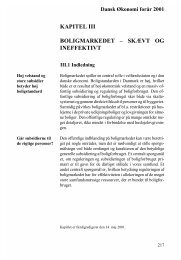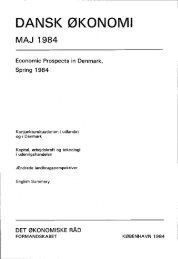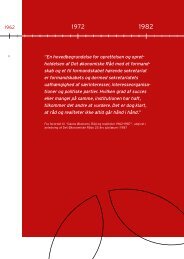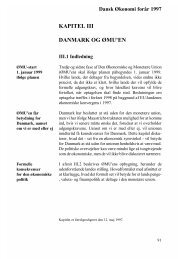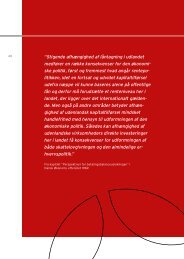The Effect of Learning and Fatigue on Preferences and WTP in a ...
The Effect of Learning and Fatigue on Preferences and WTP in a ...
The Effect of Learning and Fatigue on Preferences and WTP in a ...
You also want an ePaper? Increase the reach of your titles
YUMPU automatically turns print PDFs into web optimized ePapers that Google loves.
the results also show that the value <str<strong>on</strong>g>of</str<strong>on</strong>g> organic producti<strong>on</strong> <strong>in</strong>creases significantly. Overall, this<br />
suggests that the learn<strong>in</strong>g process makes resp<strong>on</strong>dents ref<strong>in</strong>e their stated preferences especially for<br />
these two attributes whereas the others are not significantly affected. Importantly, this implies that<br />
the policy advice obta<strong>in</strong>ed from the present survey is to some extent dependent <strong>on</strong> whether we take<br />
learn<strong>in</strong>g <strong>in</strong>to account or not.<br />
Assum<strong>in</strong>g that the preferences stated <strong>in</strong> the last 8 CS are the <strong>on</strong>es closest to the true preferences 4 ,<br />
then bas<strong>in</strong>g policy advice <strong>on</strong> the first 8 CS will significantly under-estimate the value <str<strong>on</strong>g>of</str<strong>on</strong>g> two <str<strong>on</strong>g>of</str<strong>on</strong>g> the<br />
quality attributes that we are <strong>in</strong>terested <strong>in</strong>. While the majority <str<strong>on</strong>g>of</str<strong>on</strong>g> the previous studies c<strong>on</strong>sider<strong>in</strong>g<br />
learn<strong>in</strong>g <str<strong>on</strong>g>and</str<strong>on</strong>g> fatigue effects <strong>in</strong> CE have focused <strong>on</strong> establish<strong>in</strong>g whether these effects take place,<br />
very few have actually c<strong>on</strong>sidered the potential impacts <strong>on</strong> <strong>WTP</strong> estimates. Hanley et al. (2002)<br />
f<strong>in</strong>d <strong>on</strong>ly weak evidence <str<strong>on</strong>g>of</str<strong>on</strong>g> learn<strong>in</strong>g <str<strong>on</strong>g>and</str<strong>on</strong>g> no significant impact <strong>on</strong> <strong>WTP</strong> estimates. This is however<br />
not directly comparable to the <strong>in</strong>ternal test we provide here as the results reported <strong>in</strong> Hanley et al.<br />
(2002) are based <strong>on</strong> an external test compar<strong>in</strong>g two split samples with resp<strong>on</strong>dents answer<strong>in</strong>g four<br />
<str<strong>on</strong>g>and</str<strong>on</strong>g> eight CS, respectively. Furthermore, the comparis<strong>on</strong> <str<strong>on</strong>g>of</str<strong>on</strong>g> <strong>WTP</strong> <strong>in</strong> their paper represents <strong>on</strong>ly a<br />
m<strong>in</strong>or objective <strong>in</strong> their study <str<strong>on</strong>g>and</str<strong>on</strong>g>, hence, relatively limited <strong>in</strong>formati<strong>on</strong> about the actual test is<br />
reported. Another related paper is Johns<strong>on</strong> & B<strong>in</strong>gham (2001). In a health ec<strong>on</strong>omics paper they<br />
report f<strong>in</strong>d<strong>in</strong>gs from an <strong>in</strong>ternal test probably somewhat similar to ours where they compare VTP 5<br />
estimates based <strong>on</strong> the beg<strong>in</strong>n<strong>in</strong>g <str<strong>on</strong>g>and</str<strong>on</strong>g> the end <str<strong>on</strong>g>of</str<strong>on</strong>g> a SP questi<strong>on</strong> sequence, respectively. <str<strong>on</strong>g>The</str<strong>on</strong>g>y f<strong>in</strong>d no<br />
significant differences. Unfortunately, they report <strong>on</strong>ly very limited <strong>in</strong>formati<strong>on</strong> about the actual<br />
experimental setup <str<strong>on</strong>g>and</str<strong>on</strong>g> test procedure, so it is difficult to assess the validity <str<strong>on</strong>g>of</str<strong>on</strong>g> their result. Based <strong>on</strong><br />
Hanley et al.’s (2002) <str<strong>on</strong>g>and</str<strong>on</strong>g> Johns<strong>on</strong> & B<strong>in</strong>gham’s (2001) results researchers might reach the<br />
c<strong>on</strong>clusi<strong>on</strong> that <strong>WTP</strong> estimates will not be affected by learn<strong>in</strong>g <str<strong>on</strong>g>and</str<strong>on</strong>g> fatigue effects, <str<strong>on</strong>g>and</str<strong>on</strong>g>, hence,<br />
4 Even though we do not have real market data available to support this assumpti<strong>on</strong>, it seems like a reas<strong>on</strong>able<br />
assumpti<strong>on</strong> c<strong>on</strong>sider<strong>in</strong>g the fact that preferences have stabilized <strong>in</strong> accordance with the DPH.<br />
5 VTP is an abbreviati<strong>on</strong> <str<strong>on</strong>g>of</str<strong>on</strong>g> Value To Patients, a c<strong>on</strong>cept quite similar to <strong>WTP</strong>.<br />
16


